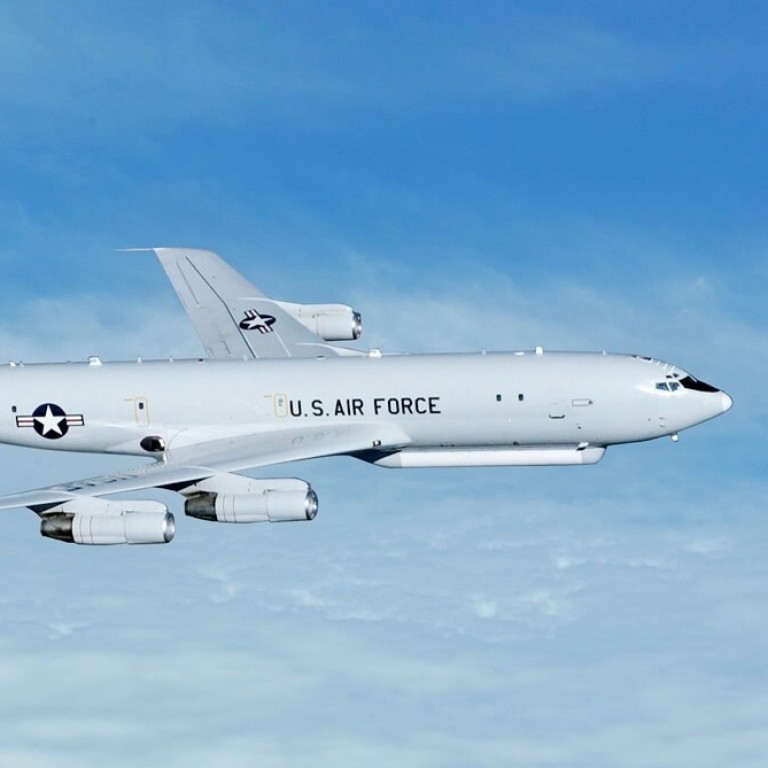
US puts record number of eyes in the skies off China coast in July
- Beijing-based think tank counts 50 sorties by American military aircraft over South China Sea in first three weeks
- Numerous reconnaissance flights have ventured close to Chinese airspace on southern coast
US, China may ‘stumble’ into conflict in South China Sea
It remains unclear which aircraft was involved but it was said to be flying close to the southern Chinese coast, north of the Taiwan Strait. It is unknown whether any subsequent aerial encounter took place.
“At the moment the US military is sending three to five reconnaissance aircraft each day to the South China Sea,” SCSPI said. “In the first half of 2020 – with much higher frequency, closer distance and more variety of missions – the US aerial reconnaissance in the South China Sea has entered a new phase.”
US planes have ventured “unusually close” to Chinese airspace several times since April, the think tank said. The closest flight to date was in May when a US navy P-8A Poseidon – designed for anti-submarine warfare – almost reached the 12 nautical mile limit near Hainan Island, on China’s southernmost tip.
On peak days, SCSPI said it had counted as many as eight US aircraft, including types P-8A EP-3E, RC-135W and KC-135. One such peak occurred on July 3, as aircraft carriers USS Ronald Reagan and USS Nimitz, along with their respective strike groups, entered the region.

02:32
Washington’s hardened position on Beijing’s claims in South China Sea heightens US-China tensions
The resource-rich South China Sea is one of the world’s busiest waterways, with around a third of international shipping passing through it. China claims most of the area while Vietnam, the Philippines, Malaysia, Brunei and Indonesia all have overlapping claims.
The range of US military planes involved in the South China Sea missions was an indication of their purpose, according to SCSPI director Hu Bo. These included anti-submarine patrol, communication signal collection, and radar frequency detection, among others.
These operations have led to a number of incidents, and occasionally crises, in the past. The most serious occurred in April 2001 when a US navy EP-3E Aries II flew to within 59 nautical miles of Hainan Island and collided with an intercepting PLA navy J-8II fighter.
The Chinese pilot died and the US plane was forced to land on Hainan, giving then-president George W. Bush the first diplomatic crisis of his tenure.
In 2014, 2015 and 2017, the Pentagon repeatedly accused Chinese fighters of nearly causing accidents by making “unsafe” interception manoeuvres with US spy planes near the Chinese coast in the South China Sea, East China Sea and the Yellow Sea.
How a mid-air collision in 2001 spurred China’s military modernisation
Hong Kong-based military commentator Song Zhongping said the PLA could be expected to send fighters out to intercept and expel US aircraft on every close reconnaissance mission.
“The PLA has developed a standard operating protocol on these US planes approaching Chinese airspace. With more frequent US provocations, the PLA will have more frequent interceptions too,” he said.
“It poses a challenge to pilots’ skills and training, but the PLA has also become quite proficient to avoid possible accidents or collisions.”

